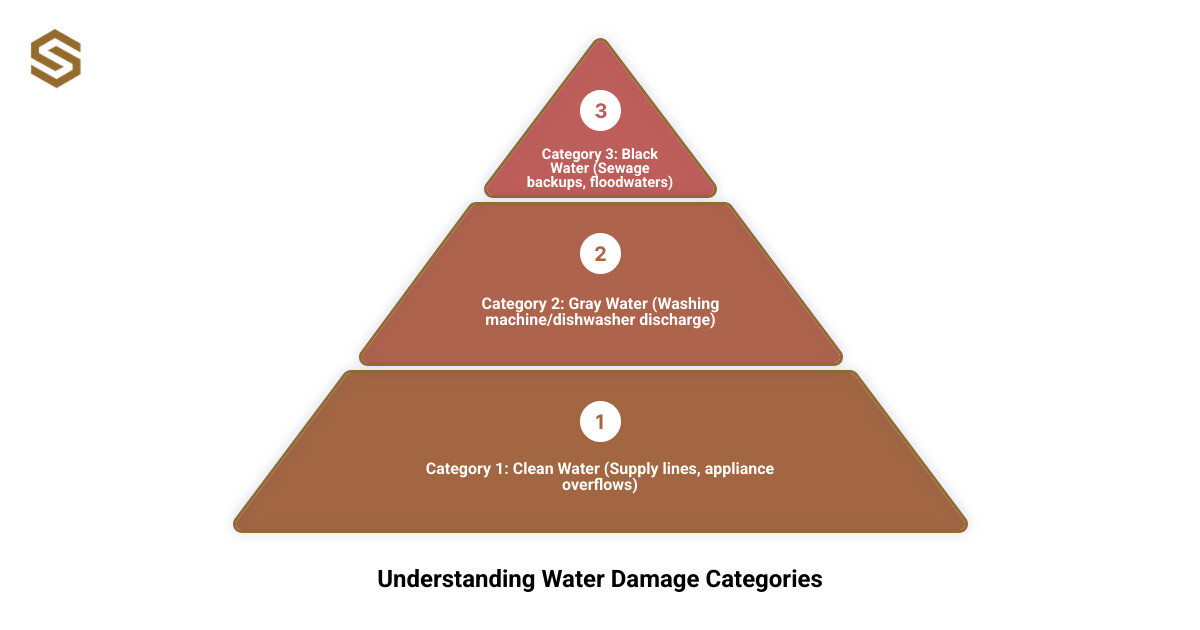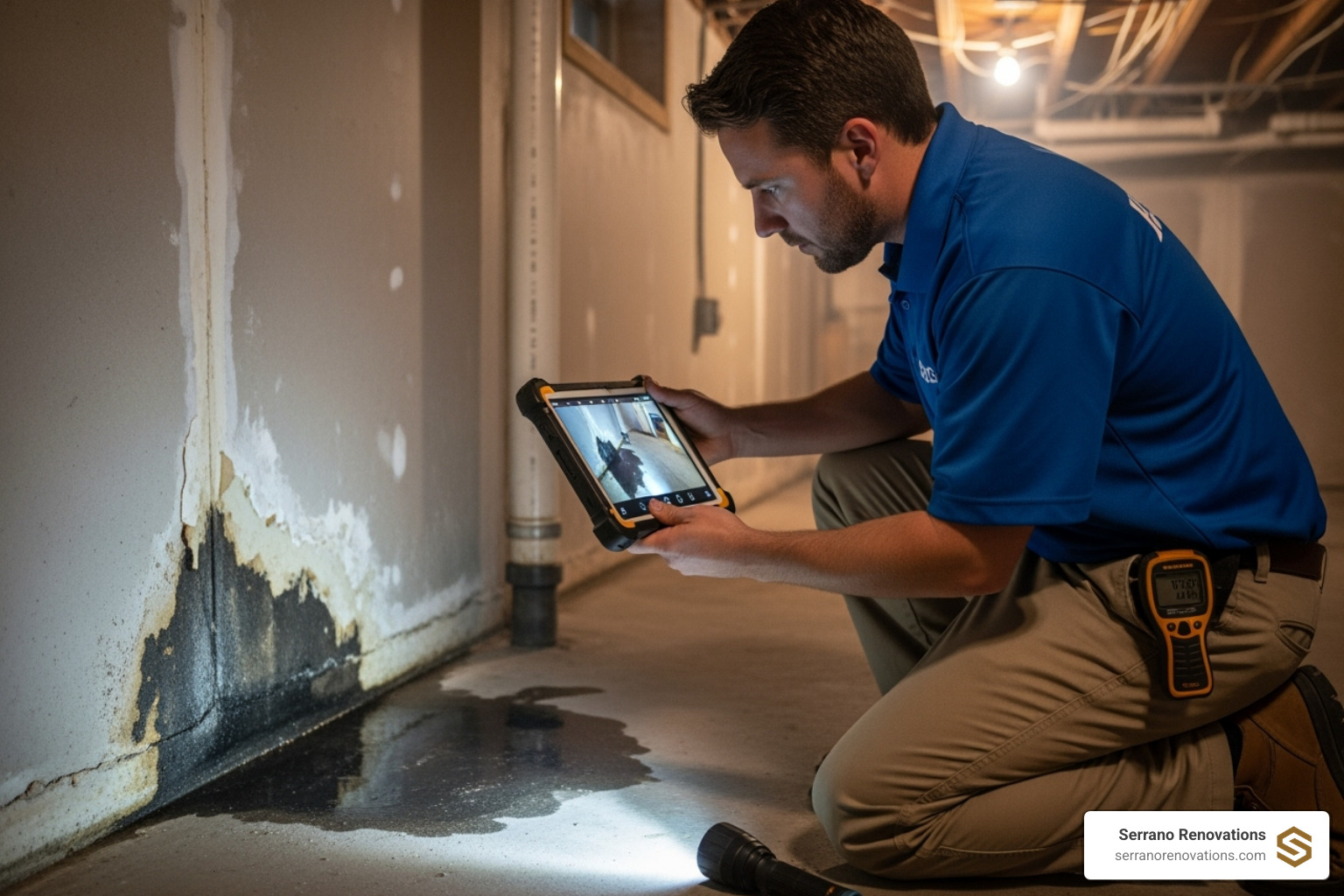Why Professional Basement Restoration Services Are Essential After Water Damage
When basement restoration water damage strikes, you’re facing more than just a puddle. It’s a race against time, with potential structural damage and health hazards looming. You have a critical 24-48 hour window to act before mold begins to grow, turning a nuisance into a disaster that threatens your home and family.
Quick Answer: Best Basement Restoration Services Must Have:
- 24/7 emergency response with rapid mobilization
- IICRC certification and proper licensing/insurance
- Comprehensive services from water extraction to full reconstruction
- Transparent pricing with direct insurance billing
- Proven track record with positive customer reviews and warranties
Research shows that a majority of homes will experience wet basement problems at some point. Without proper restoration, you risk recurring mold issues, compromised air quality, and costly structural repairs down the road. Finding the right restoration service isn’t just about getting the water out—it’s about ensuring your basement is properly dried, sanitized, and restored to prevent future problems. The difference between a quick fix and professional restoration can mean the difference between a one-time expense and years of ongoing issues.

What Defines an Elite Restoration Service? Key Qualities to Look For
When your basement floods, choosing the right professional for your basement restoration water damage is critical. It’s the difference between a quick fix and a lasting solution that protects your home and family’s health. An elite service brings expertise, proper equipment, and a systematic approach to the job.
At Serrano Renovations, we believe in providing custom solutions that fulfill our clients’ dreams. That philosophy extends to choosing restoration partners who share our commitment to exceptional craftsmanship and clear communication. When we evaluate restoration services—and when you should too—we look for professionals who treat your home with the same care they’d give their own.
The gold standard includes 24/7 availability, rapid response, IICRC certification, proper licensing and insurance, positive reviews, and transparent estimates.
For more information about our remediation services, you can visit our website: More info about our remediation services
Before you hire anyone, arm yourself with these essential questions:
- Are you IICRC certified for water damage restoration and mold remediation?
- Can you provide proof of licensing, bonding, and insurance?
- Do you offer 24/7 emergency services, and what is your typical response time?
- Can you provide a detailed, written estimate before starting any work?
- How do you handle the insurance claim process?
- What is your experience with my type of water damage (clean, gray, or black water)?
- What steps do you take to prevent mold growth?
- What is your drying protocol, and how do you verify that the area is completely dry?
- Can you provide recent references?
- Do you offer a warranty on your work?
24/7 Emergency Response and Rapid Mobilization
Basement restoration water damage operates on nature’s timeline, not yours. Mold can begin to grow within 24 to 48 hours of water exposure. An elite restoration service understands this and operates around the clock. Their rapid response is a commitment that can save your home from further damage. When professionals arrive within hours, they can immediately begin mitigation, reducing water absorption, minimizing mold risk, and salvaging belongings that might otherwise be lost.
Industry Certifications and Proper Insurance
When it comes to basement restoration water damage, credentials matter. The most important one is certification from the Institute of Inspection, Cleaning and Restoration Certification (IICRC). An IICRC-certified technician has undergone rigorous training in the science of water damage, from moisture detection to proper drying techniques. This certification ensures they follow proven, industry-standard practices, preventing costly mistakes.
Proper licensing, bonding, and insurance are also non-negotiable. Licensing proves they meet state requirements, bonding provides financial protection if they fail to complete the job, and comprehensive liability insurance protects you from any damage that might occur during the restoration. Always ask for proof of these credentials.
Comprehensive Service Offering
The best basement restoration water damage professionals provide a complete, end-to-end solution. This includes:
- Water Extraction: Using powerful pumps and commercial-grade equipment.
- Structural Drying & Dehumidification: With industrial air movers and dehumidifiers to control humidity.
- Mold Remediation: Proper containment and safe removal of any mold.
- Content Pack-Out: Carefully moving and restoring your belongings.
- Odor Removal: Addressing lingering musty smells.
- Full Reconstruction: Replacing damaged drywall, flooring, and other structural elements.
This comprehensive approach means you work with one team from start to finish, ensuring consistency and accountability. For any home restoration needs, we are here to help: Home Restoration Contractors Near Me.
Transparent Quoting and Insurance Liaison
A top-tier restoration service provides detailed, written estimates that break down every service and cost. There should be no vague line items or hidden fees. Everything should be clearly explained.
Many experienced restoration companies also work directly with insurance providers. They can bill your insurance company directly and assist with documenting the damage, providing all necessary photos and reports to your adjuster. This insurance expertise is invaluable, turning a potentially bureaucratic nightmare into a smooth claims process.
The Champion’s Playbook: A Step-by-Step Guide to Professional Basement Restoration Water Damage
When water invades your basement, you’re facing a complex challenge that requires a professional approach. At Serrano Renovations, we’ve seen how the right process can turn disaster into opportunity. This guide walks you through the professional basement restoration water damage process.

Common causes of basement flooding include sump pump failures, foundation cracks, heavy rain, burst pipes, and appliance malfunctions. Identifying the cause is key to preventing a repeat disaster.
Step 1: Immediate Safety and First Calls
Before anything else, prioritize safety. Water and electricity are a deadly mix. If you can’t safely access your circuit breaker, call an electrician immediately to shut off the power. If you smell gas, which can happen if pilot lights are extinguished, leave the house and call your gas company. Once the immediate hazards are handled, call your insurance agent to start a claim, and then call a professional basement restoration water damage specialist.
Step 2: Damage Assessment and Documentation for your basement restoration water damage
A thorough assessment is crucial for your insurance claim. Professionals will identify the water source and categorize the water: Clean (from supply lines), Gray (from appliances, may have contaminants), or Black (from sewage, highly contaminated).

They use moisture meters and thermal imaging to find hidden water in walls and floors. Before they begin, document everything with photos and videos and create an inventory of damaged items for your insurance claim. This evidence is vital.
Step 3: Professional Water Extraction
Getting the water out requires professional equipment. Restoration companies use powerful pumps and truck-mounted extractors to remove water quickly. However, for severe flooding, water must be pumped out slowly to prevent structural damage. As recommended in FEMA’s flood preparedness guidelines, removing water too quickly can create pressure imbalances that may crack or even collapse foundation walls. Professionals manage this process carefully, balancing speed with safety.
Step 4: Thorough Drying and Dehumidification
Once the standing water is gone, the most critical phase begins: drying. This isn’t a job for a few household fans.

Professionals use a combination of high-velocity air movers and commercial dehumidifiers to create an environment that promotes rapid drying. They use moisture meters to monitor progress, ensuring materials are returned to their proper moisture content and that humidity levels are kept between 30-50% to prevent mold growth. This scientific approach eliminates hidden moisture pockets.
Step 5: Cleaning, Sanitizing, and Mold Prevention
With the basement dry, the area must be cleaned and sanitized, especially if gray or black water was present. Professionals use antimicrobial and disinfectant solutions to kill bacteria and other pathogens. They may also apply antimicrobial treatments to prevent future mold growth. Air scrubbers are used to filter mold spores and other contaminants from the air, improving indoor air quality. Any lingering odors are eliminated with professional deodorization techniques. Porous materials like carpet and drywall that were contaminated are often removed and disposed of for safety.
Step 6: The Final Restoration and Rebuild
The final stage transforms your basement from a disaster zone back into a functional, beautiful space. This is where Serrano Renovations’ expertise in home renovation truly shines. The process includes replacing drywall, installing new flooring (often with more moisture-resistant options), repairing any structural elements, and finishing with fresh paint and a thorough cleanup. Our goal isn’t just to return your property to its pre-loss condition—we aim to make it better. The rebuild is an opportunity to upgrade your basement into a space you’ll love. For comprehensive basement renovation projects, you can explore our services at Basement Renovations Near Me.
Navigating the Aftermath: Insurance, Contracts, and Quality Control
Dealing with basement restoration water damage is stressful enough without the added complexities of insurance claims and contractor agreements. We understand the importance of clear communication and accountability. Here’s how to steer these critical aspects.
Decoding Your Insurance Policy
Understanding your insurance coverage is paramount. Many homeowners are surprised to learn that standard policies have significant limitations regarding water damage.
- Homeowners vs. Flood Insurance: Standard policies typically cover “sudden and accidental” internal sources like a burst pipe. They generally exclude damage from natural floods, groundwater seepage, or sewer backups. For that, you need a separate Flood Insurance policy, often through the National Flood Insurance Program (NFIP).
- Covered Perils & Exclusions: Review your policy for specific language. Some policies offer optional riders for sewer backup or sump pump failure, which are wise investments.
- ACV vs. RCV: Your policy will pay either Actual Cash Value (ACV), which is the depreciated value, or Replacement Cost Value (RCV), which covers the cost of new materials. RCV coverage is preferable.
- Contact Your Agent: Call your agent immediately. They can explain your coverage, start the claims process, and advise you on your deductible.
The Contractor’s Contract: What Must Be Included for basement restoration water damage
A clear, detailed contract is your best protection. Even if your insurer recommends a contractor, insist on a comprehensive written agreement.

A strong contract must include:
- Detailed Scope of Work: An itemized list of all services, repairs, and materials. It should be specific, not vague.
- Cost Breakdown: A clear breakdown of all costs, including labor, materials, and fees.
- Payment Schedule: A schedule for payments tied to project milestones, with a final payment held until you are satisfied.
- Project Timeline: A clear start date and an estimated completion date.
- Change Order Process: A formal process for any changes to the project, requiring a written and signed amendment.
- Warranty Information: Specific details on the warranty for workmanship and materials.
Read any contract thoroughly before signing.
Ensuring Accountability and Quality Work
Active involvement is key to a successful basement restoration water damage project.
- Communicate Regularly: Schedule frequent check-ins with the project manager.
- Document Progress: Continue taking your own photos throughout the process.
- Create a Punch List: Near the end, list any items that need correction.
- Conduct a Final Walkthrough: Before making the final payment, walk through with the contractor and your punch list to ensure everything is completed to your satisfaction.
- Withhold Final Payment: It’s standard to hold back a final percentage (5-10%) until the punch list is complete.
By staying engaged, you ensure the job is done right.
Frequently Asked Questions about Basement Water Damage
When you’re dealing with basement restoration water damage, you have questions. Here are answers to the most common ones we hear.
How long does the drying process take after a basement flood?
The honest answer is: it depends. Most drying processes take three to five days, but severe flooding can extend this to a week or more. The key factors are the extent of the damage, the types of materials affected (porous materials like drywall take longer), and the ambient humidity. Professionals use powerful equipment to speed up the process and monitor moisture levels to ensure everything is completely dry, preventing future mold growth.
Can I clean up minor water damage myself?
For a very small, clean water spill (e.g., an overflowing sink you catch immediately), DIY cleanup might be an option. This involves removing the water, using fans to dry the area, and disinfecting surfaces. However, moisture can easily hide inside walls or under floors, creating a risk for mold.
According to the EPA’s guidelines on mold cleanup, DIY cleanup is only recommended for affected areas smaller than 10 square feet. For anything larger, or if the water is contaminated (gray or black water), you should call a professional. Attempting a large-scale cleanup yourself can lead to bigger, more expensive problems down the road.
Does homeowners insurance typically cover basement flooding?
This is a critical point: standard homeowners insurance generally does NOT cover flooding from outside sources. Your policy usually covers water damage that is “sudden and accidental” from inside your home, like a burst pipe or a faulty appliance.
Damage from natural floods, groundwater seeping through the foundation, or sewer backups are typically excluded. For flood protection, you need a separate policy from the National Flood Insurance Program (NFIP) or a private insurer. We also recommend adding a sewer backup rider to your standard policy. Always review your policy documents or speak with your agent to understand your specific coverage.
Conclusion
When your basement floods, it can feel overwhelming. But with the right team and a clear plan, this disaster can become a fresh start for your home.

Remember these key takeaways:
- Safety First: Always address electrical and gas hazards before doing anything else.
- Time is Critical: The 24-48 hour window to prevent mold is real. Act fast.
- Professional Help is Essential: IICRC-certified technicians have the tools and knowledge to do the job right, preventing long-term issues.
- Follow the Process: From assessment and extraction to drying and rebuilding, each step is crucial for a successful outcome.
- Know Your Coverage: Understand your insurance policy and get a detailed contract to protect your investment.
At Serrano Renovations, we’ve seen how basement restoration water damage can be an opportunity for improvement. We believe in exceptional craftsmanship and clear communication, turning a crisis into a comeback. With modern materials and expert work, your basement can be even better than it was before.
For expert guidance on your Basement Flooding Remediation, trust certified professionals to restore your home and peace of mind. We’re here to help homeowners throughout Margate, Boca Raton, Miami, Broward County, Deerfield Beach, and Delray Beach turn their basement disasters into dream spaces.



Comments